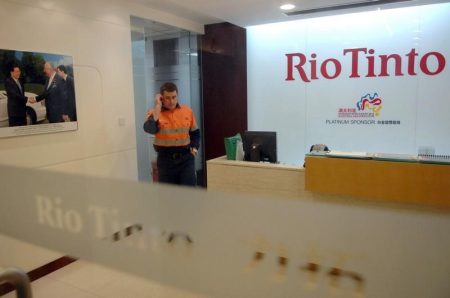In this article we delve into the aerospace industry and gain valuable insight by utilizing AAII’s A+ Investor Stock Grades, all while pondering astronaut Sally Ride’s words: “The stars don’t look bigger, but they do look brighter.” With the future of aerospace in mind, let’s assess whether three aerospace giants—Boeing
BA
LMT
NOC
Aerospace Stocks Recent News
The aerospace industry is a dynamic and vital sector that encompasses a wide range of activities related to the design, development, manufacturing and operation of aircraft, spacecraft and associated technologies. It plays a critical role in shaping modern transportation, defense systems, communications and scientific exploration. This industry brings together engineering, innovation and cutting-edge technology to push the boundaries of human capability and exploration beyond Earth’s atmosphere.
The global aerospace market was valued at $855.6 billion in 2023 and, according to Business Research Co., it is expected to grow at a compound annual growth rate (CAGR) of 5.9% from 2023 to 2027. This would value the market at more than $1.1 trillion by 2027. North America dominates the market with over 38.7% market share, driven by NASA’s significant space exploration spending and commercial investments. Despite uncertainties surrounding the global economy and a recent deceleration in space investment, the sector is anticipated to display resilience in the forthcoming years.
Commercial enterprises prioritize investments that deliver returns within the lifetime of their shareholders, considering factors such as return on investment (ROI), time to achieve returns and the likelihood of research and development (R&D) success. Conversely, governments enjoy the advantage of taking a long-term perspective, spanning decades or even centuries, as their decisions transcend generations, allowing for a more patient approach to investment choices. In 2022, global government expenditure on space programs reached a record of $103 billion. The U.S. government led the world in space expenditure, allocating nearly $62 billion to its space programs. Following closely behind was China, with government expenditure on space programs amounting to almost $12 billion.
The growth in this evolving market is driven by the U.S. government’s support for private companies and their encouragement of innovation. Space-related expenditures increased 3% in fiscal-year 2022, reaching $24 billion, and the Biden administration aims to further boost it by 8% in fiscal-year 2023, approaching $26 billion. These investments have spurred innovation and resulted in a substantial rise in orbital launches, with 145 reported in 2021, a 27% increase from the previous year. The momentum continued with 125 launches in the first three quarters of 2022.
The aerospace industry is poised for a promising future, with companies set to reap the rewards of reduced material costs and advancements in technology. While new space start-ups present inherent risks, long-established and secure companies hold the advantage in this competitive market. Now, let us turn our focus to the key players positioned to make the most significant impact in this thriving arena.
Grading Aerospace Stocks With AAII’s A+ Stock Grades
When analyzing a company, it is helpful to have an objective framework that allows you to compare companies in the same way. This is why AAII created the A+ Stock Grades, which evaluate companies across five factors that research and real-world investment results indicate to identify market-beating stocks in the long run: value, growth, momentum, earnings estimate revisions (and surprises) and quality.
Using AAII’s A+ Stock Grades, the following table summarizes the attractiveness of three athleisure stocks—Boeing, Lockheed Martin and Northrop Grumman—based on their fundamentals.
AAII’s A+ Stock Grade Summary for Three Aerospace Stocks
What the A+ Stock Grades Reveal
Boeing Co. (BA) is an aerospace company. Its segments include commercial airplanes (BCA), defense, space & security (BDS), global services (BGS) and Boeing Capital (BCC). Its BCA segment develops, produces and markets commercial jet aircraft to the commercial airline industry worldwide. Its commercial jet aircraft in production include the 737 narrow-body model and the 767, 777 and 787 wide-body models. Its BDS segment is engaged in the research, development, production and modification of manned and unmanned military aircraft and weapons systems. Its BGS segment offers aerospace platforms and systems with a range of products and services, including supply chain and logistics management, engineering, maintenance and modifications, upgrades and conversions, spare parts, pilot and others. Its BCC segment’s portfolio consists of equipment under operating leases, sales-type/finance leases, notes and other receivables, assets held for sale or re-lease and investments.
The company has a Value Grade of D, based on its Value Score of 22, which is considered expensive. Boeing’s Value Score ranking is based on several traditional valuation metrics. The company has a percentile rank of 52 for the price-to-sales (P/S) ratio and a rank of 100 for the ratio of enterprise value to earnings before interest, taxes, depreciation and amortization (EV/Ebotda), with lower rank indicating better value. The company has a shareholder yield of –1.5%, meaning it is increasing the number of shares available to purchase. Boeing has a price-to-sales ratio of 1.96.
The Value Grade is the percentile rank of the average of the percentile ranks of the valuation metrics mentioned above, along with the price-to-free-cash-flow (P/FCF) ratio, price-to-book-value (P/B) ratio and the price-earnings (P/E) ratio.
A higher-quality stock possesses traits associated with upside potential and reduced downside risk. Backtesting of the Quality Grade shows that stocks with higher grades, on average, outperformed stocks with lower grades over the period from 1998 through 2019.
Boeing has a Quality Grade of C with a score of 49, which is average. The A+ Quality Grade is the percentile rank of the average of the percentile ranks of return on assets (ROA), return on invested capital (ROIC), gross profit to assets, buyback yield, change in total liabilities to assets, accruals to assets, Z double prime bankruptcy risk (Z) score and F-Score. The score is variable, meaning it can consider all eight measures or, should any of the eight measures not be valid, the valid remaining measures. To be assigned a Quality Score, though, stocks must have a valid (non-null) measure and corresponding ranking for at least four of the eight quality measures.
The company ranks weakly in terms of its gross income to assets and buyback yield. Boeing has gross income to assets of 3.6% and a buyback yield of –1.5%. The sector median gross income to assets is 23.6% and the median buyback yield is –0.3% for the sector. The company has an F-Score of 5, ranking it in the 61st percentile of all stocks. The F-Score is a number between 0 and 9 that assesses the strength of a company’s financial position. It considers the profitability, leverage, liquidity and operating efficiency of a company.
Boeing has a Momentum Grade of A, based on its Momentum Score of 82. This means that it has very strong weighted relative strength over the last four quarters. This score is derived from an above-average relative price strength of 5.3% in the most recent quarter, –5.6% in the second-most-recent quarter and 41.6% in the third-most-recent quarter, offset by below-average relative price strength of –10.0% in the fourth-most-recent quarter. The scores are 69, 65, 92 and 36 sequentially from the most recent quarter. The weighted four-quarter relative price strength is 7.3%, which translates to a score of 82. The weighted four-quarter relative strength rank is the relative price change for each of the past four quarters, with the most recent quarterly price change given a weight of 40% and each of the three previous quarters given a weighting of 20%.
Lockheed Martin (LMT) is a security and aerospace company. It operates through four segments. The aeronautics segment is engaged in the research, design, development, manufacture, support and upgrade of military aircraft, including combat and air mobility aircraft, unmanned air vehicles and related technologies. The missiles and fire control segment provides air and missile defense systems; fire control systems; manned and unmanned ground vehicles; and energy management solutions. The rotary and mission systems segment provides design, manufacture, service and support for various military and commercial helicopters, surface ships, sea- and land-based missile defense systems, radar systems, sea- and air-based mission and combat systems, command and control mission solutions, cyber solutions and simulation and training solutions. The space segment is engaged in the research and development, design, engineering and production of satellites, space transportation systems, strike and defensive systems.
Earnings estimate revisions offer an indication of how analysts view the short-term prospects of a firm. Lockheed Martin has an Earnings Estimate Revisions Grade of C, which is neutral. The grade is based on the statistical significance of its latest two quarterly earnings surprises and the percentage change in its consensus estimate for the current fiscal year over the past month and past three months.
Lockheed Martin reported an earnings surprise of 2.8% for second-quarter 2023, and in the prior quarter reported a positive earnings surprise of 9.1%. Over the last month, the consensus earnings estimate for the third quarter of 2023 has decreased from $6.740 to $6.665 per share due to four upward and 13 downward revisions. Over the last month, the consensus earnings estimate for the fiscal year ending January 2024 has remained relatively flat, decreasing slightly from $27.16 to $27.14 per share, based on 12 upward revisions and seven downward revisions.
Lockheed Martin has a Momentum Grade of C, based on its Momentum Score of 51. This means that it has average weighted relative price strength over the last four quarters. This score is derived from an above-average relative price strength of –2.0% in the second-most-recent quarter and 22.3% in the fourth-most-recent quarter, offset by below-average relative price strength of –11.6% in the most recent quarter and –8.6% in the third-most-recent quarter. The scores are 34, 71, 32 and 88 sequentially from the most recent quarter. The weighted four-quarter relative price strength is –2.3%, which translates to a score of 51.
The company has a Value Grade of D, based on its Value Score of 39, which is considered expensive. This is derived from a high price-to-free-cash-flow ratio of 40.0 and a high price-to-book-value ratio of 12.35. In addition, Lockheed Martin has a Growth Grade of A, which is considered very strong. This is derived from a high five-year annualized sales growth rate of 5.7%, along with four of the five past years resulting in year-over-year increases in sales and positive cash from operations in each of the last five fiscal years.
Northrop Grumman (NOC) is a global aerospace and defense technology company. It operates through four segments: aeronautics systems, defense systems, mission systems and space systems. The aeronautics systems segment is engaged in the design, development, production, integration, sustainment and modernization of advanced aircraft systems for the U.S. Air Force, the U.S. Navy, other U.S. government agencies and international customers. The defense systems segment is engaged in the design, development, production, integration, sustainment and modernization of weapon and mission systems for U.S. military and civilian agency customers, and a range of international customers. The mission systems segment is engaged in advanced mission solutions and multifunction systems. The space systems segment is engaged in the design, development, integration, production and operation of space, missile defense, launch and strategic missile systems.
Northrop Grumman has a Quality Grade of B, with a score of 72. The company ranks strongly in terms of its return on assets and buyback yield. Northrop Grumman has return on assets of 10.5% and a buyback yield of 2.4%. The sector median for return on assets is only 3.0%.
Northrop Grumman has a Value Grade of D, based on a score of 35. The company has a percentile rank of 44 for the price-earnings ratio and a rank of 50 for the price-to-sales ratio. A lower price-earnings ratio is considered a better value, as investors are paying less for the same level of earnings. Northrop Grumman’s price-earnings ratio is 14.9, below the sector median of 20.2. The enterprise-value-to-EBITDA ratio is 16.2, which ranks in the 73rd percentile of all stocks.
Northrop Grumman has a Growth Grade of A and ranks in the 90th percentile among all U.S.-listed stocks. The company has increased its sales in four of the last five years, along with having positive cash from operations in five of the last five years. The company has a five-year average sales growth rate of 7.1%, which is slightly below the sector median of 7.4%.
____
The stocks meeting the criteria of the approach do not represent a “recommended” or “buy” list. It is important to perform due diligence.
If you want an edge throughout this market volatility, become an AAII member.
Read the full article here









